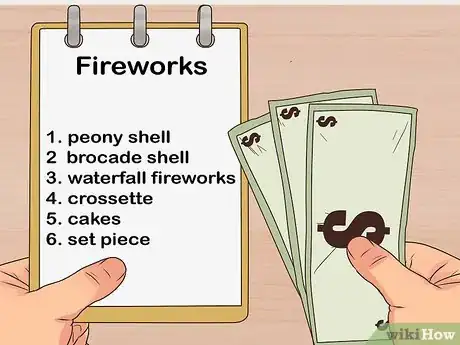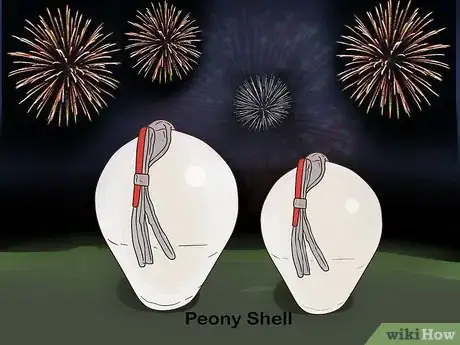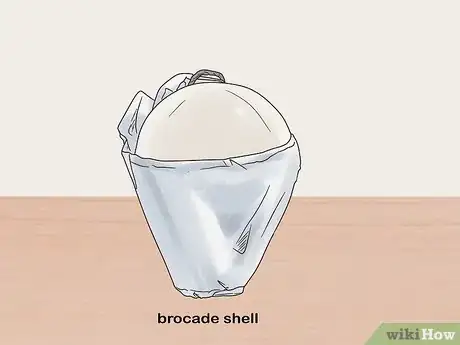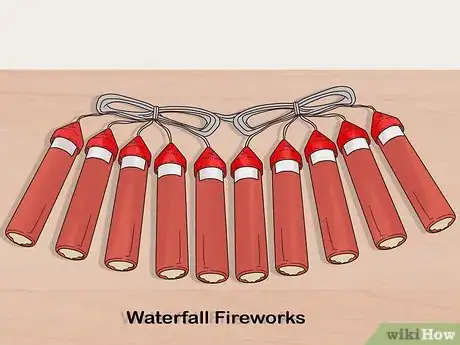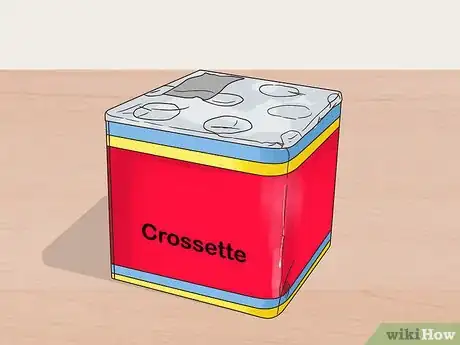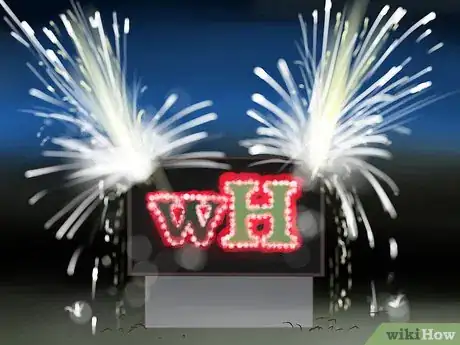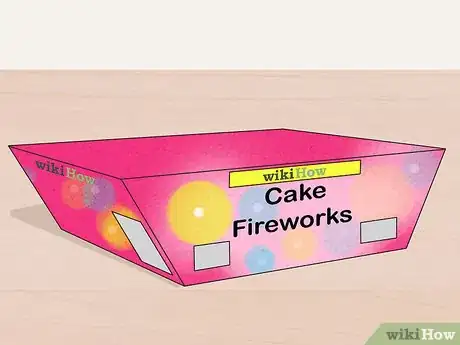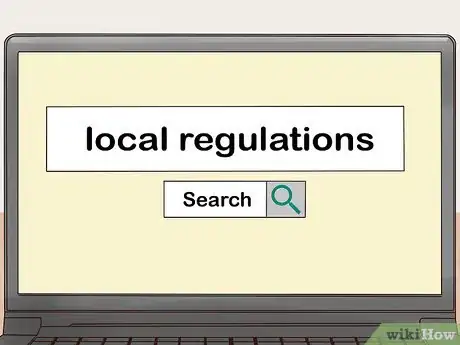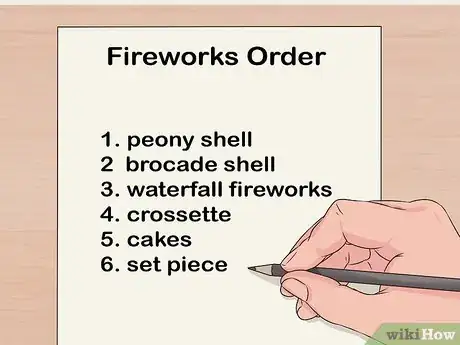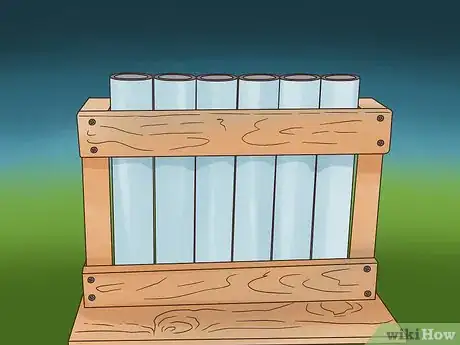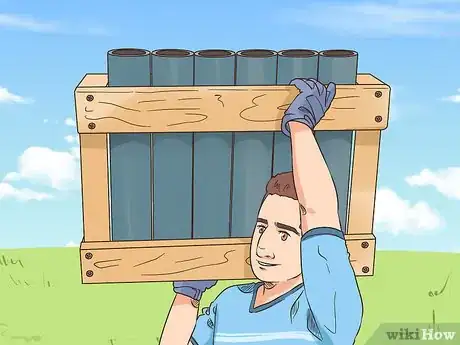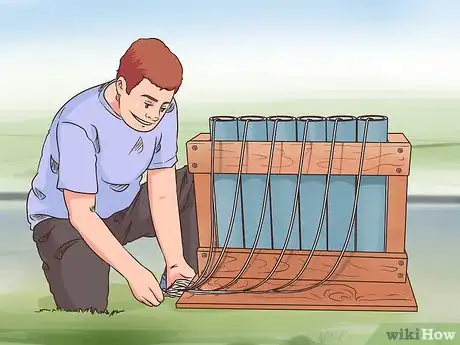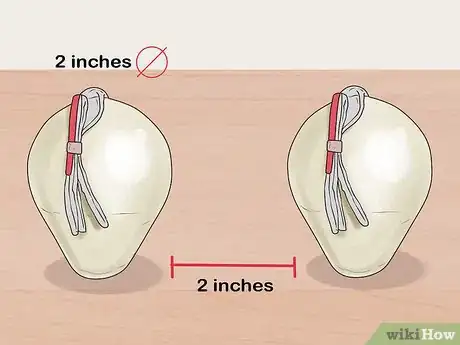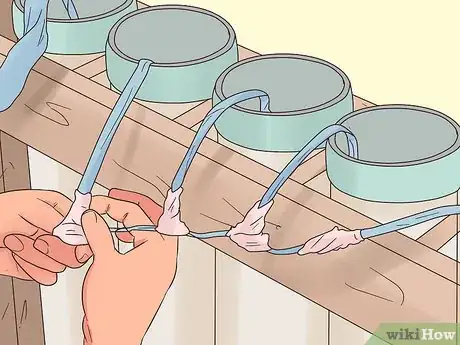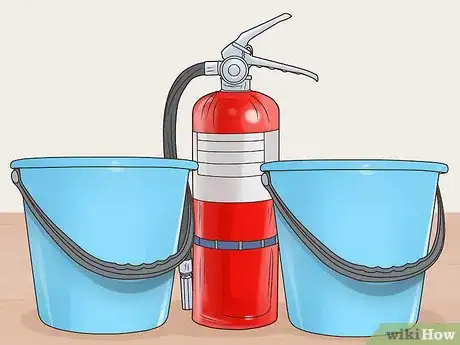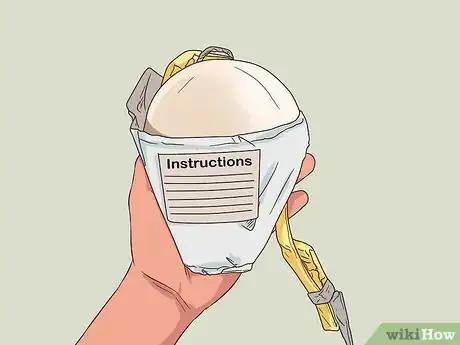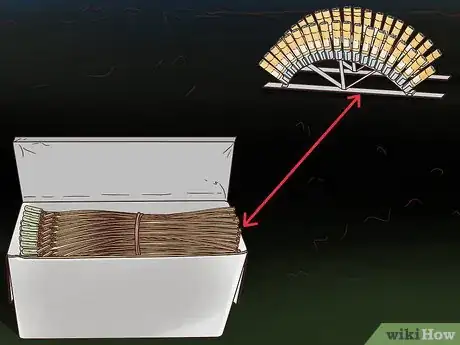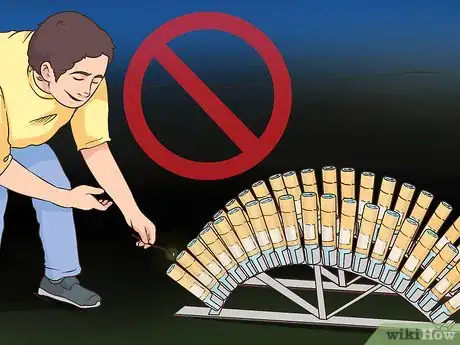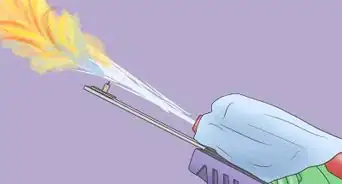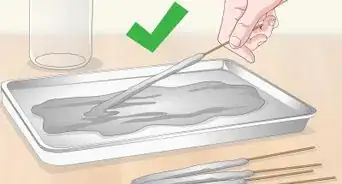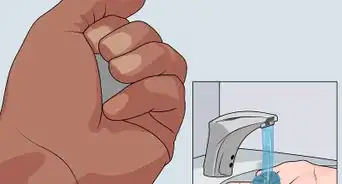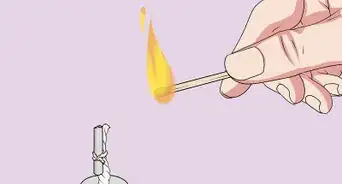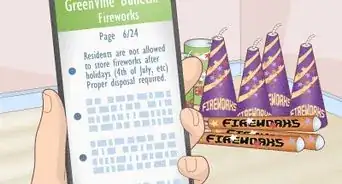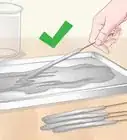This article was co-authored by wikiHow staff writer, Amy Bobinger. Amy Bobinger has been a writer and editor at wikiHow since 2017. She especially enjoys writing articles that help people overcome interpersonal hurdles but frequently covers a variety of subjects, including health and wellness, spirituality, gardening, and more. Amy graduated with a B.A. in English Lit from Mississippi College in 2011 and now lives in her hometown with her husband and two young sons.
There are 10 references cited in this article, which can be found at the bottom of the page.
This article has been viewed 193,056 times.
Learn more...
Putting on a fireworks show can be a great way to celebrate a holiday or a special occasion, but it takes a lot of planning in advance to make sure it’s safe and fun for everyone. If you pick the right fireworks and pay close attention to firework safety and legality, though, you should be able to put on a spectacular fireworks show for your family and friends!
Steps
Choosing Your Fireworks
-
1Plan to spend about $150-$500 (£125 to £400) for a decent show. This should give you anywhere from 10-50 shells, depending on the ones you choose.[1]
- Try to vary your show with at least 3-4 different effects, such as a combination of peony bursts, brocades, and waterfalls, with a multi-effect cake for the finale.
-
2Choose quality over quantity. Fireworks can be expensive, but you’ll have a more impressive show if you focus on a shorter show packed with exciting aerials rather than trying to stretch your budget into the longest show you can make. Choose shells that will make an impact on the crowd and which fire multiple shots rather than buying bottle rockets and Roman candles in bulk.Advertisement
-
3Go with a peony shell for the most common fireworks burst. Peonies are the shells most people think about when they imagine a fireworks show. They produce a spherical break of colored stars and are especially striking when several are used in quick succession.[2]
- The cost of a peony averages about $25 USD.[3]
-
4Select a brocade shell for an umbrella pattern. Brocades trail sparks, which slowly cascade down in the shape of an umbrella. Use a combination of brocades and peonies for an eye-catching opening.[4]
- A 10-shot brocade shell starts at about $20 but can cost as much as $100 depending on the intensity and duration of the effects.
-
5Pick waterfall fireworks for a long-burning tail. Waterfall fireworks create, as the name suggests, a waterfall effect after the break. The stars only fall a short distance, but the effect can be breathtaking.[5]
- A 10 ft (3.0 m) waterfall firework should cost around $40 USD.
-
6Choose a crossette for a burst that crisscrosses. A crossette shoots several large stars which then break apart into smaller stars. This is accompanied by a loud crackling sound and creates a crisscross or grid pattern.[6]
- You can find multiple-shot crossettes starting at about $15-$20 USD.
-
7Purchase a set piece to display a word or shape. Set pieces usually burn for about a minute, and they really impress the crowd. They are available in a wide variety of patterns, shapes, and words, including flags,hearts, or corporate logos. You can use these to catch the audience’s attention at the beginning, or you can incorporate it into your finale.[7]
- Since set pieces are usually custom-designed, these can cost several hundred dollars, but the impact is worth it if you have the room in your budget.
-
8Get cakes for multiple aerial effects that fire rapidly. Cakes can be a great way to create a dramatic grand finale, since they fire multiple shells in a short amount of time. The labels will describe the effects that the cake contains.[8]
- Cakes can range in price from $25 to over $150, depending on their size and the effects they produce.
Getting Ready for the Show
-
1Check your local regulations to see which fireworks are allowed. Since fireworks can present a safety hazard, you might be prohibited from using certain kinds depending on where you live, or you may be required to purchase a permit.[9]
- For instance, although most states in the U.S. allow the use of consumer fireworks (also known as Class C or 1.4G), New Jersey prohibits the use of aerial fireworks and firecrackers.[10] Some cities don't allow any fireworks.
- You may also be limited on when you can use the fireworks. For instance, in Indiana, fireworks may not be used after 11:00 p.m. or before 9:00 a.m., except on holidays, when the time is extended to midnight.
-
2Scout out your spot so you’ll know how much room you have for the show. Fireworks should not come within 25 feet (7.6 m) of any overhead object, and your spectators should be located at least 50 feet (15 m) from your fireworks.[11]
- The minimum distance for spectators may vary depending on your location. For instance, in Missouri, the distance is 70 feet per inch (roughly 10 meters for every centimeter) of the internal mortar diameter of the largest shell you will be firing. In this case, a show closing with a mortar that is 2 inches (5.1 cm) in diameter would require a spectator distance of 140 feet (43 m) [12]
- Make sure you pick a flat, open area that doesn’t have any dry grass, dead leaves, nearby buildings, trees, or other fire hazards.[13]
-
3Write out a plan for the order of your show. Make sure anyone who will be helping you has a copy of the plan. For the most impact during your show, rotate your fireworks effects and plan for as few gaps as possible.[14]
- Most fireworks effects should be rotated at least every minute or so.
- Plan to only fire a few shells at a time. If you fire too many, the effects will be lost.
-
4Build or purchase a trough to hold your fireworks. A trough is a structure filled with sand or soft earth in which fireworks can be safely positioned. You can build your trough out of plywood or use large crates. Make sure your sand or dirt is free from any rocks or other items which can become dangerous during an explosion.[15]
- Reinforce or brace your trough with brackets or heavy lumber.
- Secure your trough with stakes or spikes, or use an A-frame to prevent it from tipping over.[16]
- If you have a lot of fireworks, you may need more than one trough. Measure the size of your trough, then create a rough drawing of how your fireworks will be spaced out. Use this to determine whether you will need more than one trough.
-
5Set up your fireworks during the day. Even though you’ll want to put on your fireworks show after the sun has started to set, you should set up during the day to make sure you get everything exactly where you want it. This will help your show be safer and more accurate.
-
6Place your shells in the order and direction you want them to fire. Line up your shells in the order you want them to explode and bury them between halfway and two thirds deep in the sand, lined up in the order you want them to explode. This will help ensure they are stable enough to fire straight from the direction they are pointed. Make sure to leave the fuse uncovered.
- You may want to bury the shells so that they are slightly angled (about 15°) away from the crowd. You should never fire shells over the crowd’s head, as sparks may fall to the ground and cause injury.[17]
- Read the label on each shell carefully so you will understand how far the fireworks will travel before they explode.
- Many fireworks have a "bury line" that will show you how deep to plant them in the sand.
-
7Separate shells by at least the same distance as their own diameter. For instance, if you have a shell that is 2 inches (5.1 cm) in diameter, you will make sure that it is spaced at least 2 inches (5.1 cm) from the next shell. Use the measurement of the larger shell to determine this.[18]
-
8Set up smaller fireworks in front and big items farthest from the audience. Your smaller fireworks will have the most impact if they’re fired closer to your audience, while your larger ones should be given more room so they can be seen well.
- Make sure you are still allowing the minimum space required by your local laws between the fireworks and the audience.
-
9Connect your fireworks with a fuse. Whether you use light your fireworks by hand or with an electric detonator, you should connect your fireworks with long fuses. You can connect several shells to a single fuse, with the length of the fuse creating pauses between firings. You can purchase firework fuses online starting at $5 for a 10 ft (3.0 m) fuse.
- To determine how much fuse to use between fireworks, cut a 6 in (15 cm) piece of fuse and light one end. (Be sure you're nowhere near your shells when you do this.) Time how long it takes to burn all the way through, then use that as your guideline for spacing your fireworks.[19]
- To safely light your fireworks, use a long-handled lighter to ignite the fuse. Light only the very tip, then back away at least 20 feet (6.1 m) and wait until each firework is finished before you light the next one.[20]
-
10Use an electric detonator if you don't want to light the fuses by hand. Electric detonators are often used for larger displays as they offer precise control. You can purchase them where you buy high-end fireworks or at a hardware store that sells electrical equipment, and they can cost anywhere from $15 to $60 for a basic model, or as much as $200 for professional-grade detonators. Stand back about 20 feet (6.1 m) when you detonate the fuse.[21]
-
11Have plenty of water nearby. Fill several buckets with water and place them near the launch area, or purchase water fire extinguishers from a hardware store. Having plenty of water will be useful in case of a stray spark or for disposing misfired shells.[22]
- To make sure you can quickly reach the water if you need it, keep a large bucket at each corner of your display trough, or have one fire extinguisher on each side.
- This is even more important to do when you shoot fireworks on hot, dry nights. It is even possible to use a spray mist of cool water on the top of each mortar to cool the shells a little bit to further reduce the risk of a misfire, but be careful not to put your head directly over the mortar when you do this.
Staying Safe
-
1Read the instructions on each shell so you know what it will do. Some shells might shoot into the air with a zig-zag, while others will shoot additional stars after a delay. Carefully read the label on each shell so you’ll know exactly how it should behave.[23]
-
2Pay attention to the weather the day of the launch. No matter how excited you are about the show, safety should be your first concern. Wind can cause sparks from fireworks to behave erratically, potentially causing fires to nearby structures or injury to your audience. If the forecast calls for winds higher than 11-16 knots, or 12–18 miles per hour (19–29 km/h), you may want to take larger shells out of the show or reschedule it altogether.[24]
- You don't have to cancel your show because of light rain as long as you protected your fuses with plastic bags, but you might want to delay the show for the comfort of the crowd.
-
3Wear safety glasses and ear plugs during the launch. Anyone who will be near the launch area should wear protective gear to protect their eyes and ears. You might also want to wear fire-retardant clothing.[25]
- Have a few friends plan to stay close during the show in case you need help dousing out flames.
- If you do catch on fire, drop to the ground and roll to smother the flames.
-
4Keep spare charges or extra fuse 10 feet (3.0 m) away from the launch area. Stray sparks might ignite any extra charges or fuses you have on hand. Keep them at least 10 feet (3.0 m) from your mortar trough. Never keep charges or fuses in your pocket, as they could ignite and cause you serious injury.
-
5Do not attempt to relight fireworks that don't go off. Instead, wait for about 30 minutes, then douse them in water.[26]
Community Q&A
-
QuestionHow can fireworks be that dangerous?
 Kyoko Chibigiri (Stupei)Community AnswerFireworks are highly flammable, and some even explode as part of their performance. If misused or mishandled, the explosions or fires that fireworks could cause may end up harming you, your audience or anyone nearby, or even the property on which they are used. It's better to be safe than sorry.
Kyoko Chibigiri (Stupei)Community AnswerFireworks are highly flammable, and some even explode as part of their performance. If misused or mishandled, the explosions or fires that fireworks could cause may end up harming you, your audience or anyone nearby, or even the property on which they are used. It's better to be safe than sorry. -
QuestionWhat happends if you get close to a firework
 Amy GremillionCommunity AnswerMake sure you keep a safe distance from fireworks or you could be seriously injured.
Amy GremillionCommunity AnswerMake sure you keep a safe distance from fireworks or you could be seriously injured.
Warnings
- Never keep extra shells in your pockets.⧼thumbs_response⧽
- Don’t shoot shells from metal or glass containers as they may explode.⧼thumbs_response⧽
- Don’t allow smoking anywhere near the firing area.⧼thumbs_response⧽
- Never give fireworks to small children.⧼thumbs_response⧽
- Do not drink alcohol or do any drugs before or during the show. Fireworks require accuracy and attention in order to be safely displayed.⧼thumbs_response⧽
- Do not fire any tubes with missing base plugs or which are split, bent, or bulging.[27]⧼thumbs_response⧽
References
- ↑ https://money.com/fireworks-cost/
- ↑ http://www.americanpyro.com/display-fireworks-glossary
- ↑ http://time.com/money/3943597/fireworks-cost/
- ↑ http://www.americanpyro.com/display-fireworks-glossary
- ↑ http://www.americanpyro.com/display-fireworks-glossary
- ↑ http://www.americanpyro.com/display-fireworks-glossary
- ↑ http://www.americanpyro.com/display-fireworks-glossary
- ↑ http://www.americanpyro.com/display-fireworks-glossary
- ↑ https://www.prnewswire.com/news-releases/american-pyrotechnics-association-applauds-governor-christies-legalization-of-consumer-fireworks-300482144.html?tc=eml_cleartime
- ↑ https://www.prnewswire.com/news-releases/american-pyrotechnics-association-applauds-governor-christies-legalization-of-consumer-fireworks-300482144.html?tc=eml_cleartime
- ↑ https://dfs.dps.mo.gov/programs/fireworks/fireworks-display-inspection-guide.php
- ↑ https://dfs.dps.mo.gov/programs/fireworks/fireworks-display-inspection-guide.php
- ↑ https://dfs.dps.mo.gov/programs/fireworks/fireworks-display-inspection-guide.php
- ↑ https://www.gov.uk/government/uploads/system/uploads/attachment_data/file/31866/10-1039-fireworks-safety-displays.pdf
- ↑ https://dfs.dps.mo.gov/programs/fireworks/fireworks-display-inspection-guide.php
- ↑ http://www.com.ohio.gov/documents/fire_fireworksredbook.pdf
- ↑ https://www.gov.uk/government/uploads/system/uploads/attachment_data/file/31866/10-1039-fireworks-safety-displays.pdf
- ↑ https://dfs.dps.mo.gov/programs/fireworks/fireworks-display-inspection-guide.php
- ↑ http://www.actforlibraries.org/how-to-fuse-a-fireworks-show/
- ↑ http://www.nrcan.gc.ca/explosives/fireworks/9905
- ↑ http://www.com.ohio.gov/documents/fire_fireworksredbook.pdf
- ↑ http://www.ocfa.org/Uploads/CommunityRiskReduction/OCFA%20Guide-G15-Firework%20Public%20Display.pdf
- ↑ https://www.gov.uk/government/uploads/system/uploads/attachment_data/file/31866/10-1039-fireworks-safety-displays.pdf
- ↑ http://www.com.ohio.gov/documents/fire_fireworksredbook.pdf
- ↑ http://www.ocfa.org/Uploads/CommunityRiskReduction/OCFA%20Guide-G15-Firework%20Public%20Display.pdf
- ↑ https://www.gov.uk/government/uploads/system/uploads/attachment_data/file/31866/10-1039-fireworks-safety-displays.pdf
- ↑ http://www.ocfa.org/Uploads/CommunityRiskReduction/OCFA%20Guide-G15-Firework%20Public%20Display.pdf
About This Article
To set up a fireworks show, start by buying quality fireworks of different effects and getting a city permit. Use peony shells for a classic spherical fireworks effects, waterfall fireworks for long-burning tails, and cakes to fire off different kinds of fireworks rapidly. Once you’ve bought your fireworks, put them in a trough in order from least to most exciting, leaving the best ones for the finale. Then, connect them with a fuse, step back at least 20 feet, and set them off with an electric detonator. For more on fireworks, like how to light them safely, read on!
